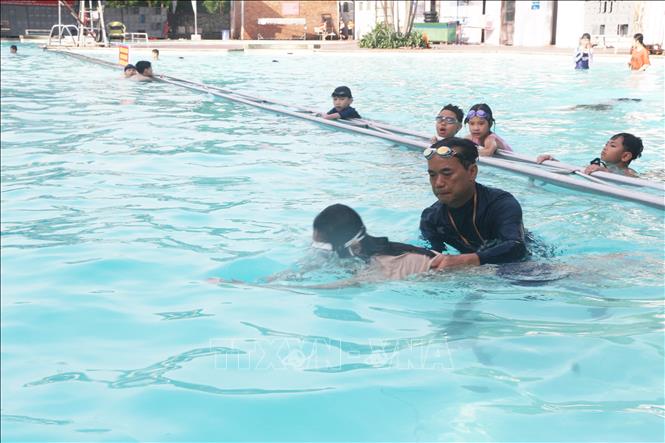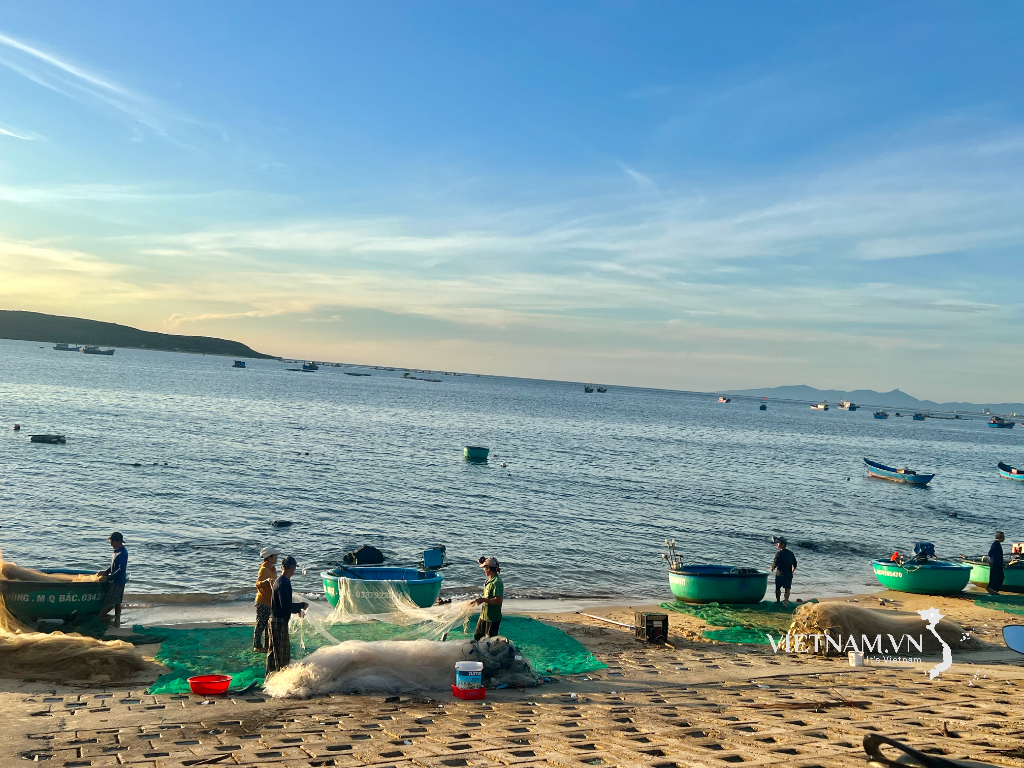This is the first official safe swimming program approved and issued by the Ministry to implement Decision No. 1717/QD-TTg dated December 31, 2024, of the Prime Minister approving the Program to Strengthen Education on Knowledge and Skills for Drowning Prevention and Control for Students in the period 2025-2035.

Currently, swimming instruction in schools lacks uniformity in curriculum and content. Schools are using programs and materials from various sources to teach swimming to students, primarily focusing on basic swimming techniques and neglecting to equip students with knowledge and skills for preventing and responding to drowning, ensuring safety in aquatic environments, and performing safe rescue operations.
Therefore, the issuance of the Safe Swimming Program and Guidance Documents aims to standardize content, help localities and educational institutions organize implementation synchronously, and equip students with sufficient knowledge and skills to prevent drowning, enabling them to proactively protect their health and lives.
The Safe Swimming Program and Materials for Students set specific goals for students at each grade level.
At the primary school level, students are equipped with basic knowledge about preventing and responding to drowning incidents, and indirect rescue techniques; they develop basic skills in safe swimming and water safety; and they are educated to enhance their self-awareness and cultivate qualities and abilities to prevent and respond to drowning incidents.
For junior high school students, the curriculum includes basic knowledge on drowning prevention, indirect rescue, basic swimming skills, and physical fitness; self-protection and response skills in water situations; knowledge, understanding, and application of safe indirect rescue steps when seeing someone drowning; and fostering a sense of responsibility towards the community regarding drowning prevention.
At the high school level, students are equipped with basic knowledge about drowning prevention, improved swimming skills, and water safety skills; they know, understand, and can apply self-rescue techniques in case of accidents in water. They practice and apply knowledge and skills in indirect rescue, safe rescue, and know how to perform initial first aid procedures for drowning victims. The goal is to raise students' awareness of their responsibility to the community in drowning prevention.
The program and guidelines for teaching safe swimming to students consist of 16 lessons, including 15 lessons and 1 assessment. Each lesson lasts from 60 to 90 minutes. Based on specific conditions (weather, learning ability, physical condition, and health of students), teachers flexibly apply teaching methods and allocate time appropriately for each student. The program and guidelines also specify the conditions for ensuring implementation regarding facilities, personnel, materials, and funding.
Regarding facilities, the Program and Guidelines stipulate that fixed or modular (mobile) swimming pools must ensure hygienic water sources, appropriate water depth, and flat pool walls and surfaces, guaranteeing safety for students and teachers during swimming lessons.
The area surrounding the swimming pool must be clean, well-ventilated, and have enough space for warm-up exercises before swimming lessons. It must have the minimum required rescue equipment, separate restrooms, showers, and changing rooms for male and female students; and swimming pool regulations.
In terms of personnel, swimming instructors have been trained and certified in safe swimming instruction and drowning prevention by competent authorities; there are lifeguards and medical staff on duty as required; and there are staff for cleaning the swimming pool area and auxiliary facilities.
Educational institutions are responsible for developing plans and submitting them to the competent authority for approval before implementing safe swimming lessons for students according to the Program; and issuing certificates of safe swimming proficiency to students who meet the requirements of the end-of-course assessment.
Source: https://baotintuc.vn/giao-duc/lan-dau-tien-bo-giao-duc-va-dao-tao-ban-hanh-chuong-trinh-day-boi-an-toan-20251031174957554.htm



![[Photo] Prime Minister Pham Minh Chinh receives the Governor of Tochigi Province (Japan)](/_next/image?url=https%3A%2F%2Fvphoto.vietnam.vn%2Fthumb%2F1200x675%2Fvietnam%2Fresource%2FIMAGE%2F2025%2F12%2F16%2F1765892133176_dsc-8082-6425-jpg.webp&w=3840&q=75)
![[Live] 2025 Community Action Awards Gala](/_next/image?url=https%3A%2F%2Fvphoto.vietnam.vn%2Fthumb%2F1200x675%2Fvietnam%2Fresource%2FIMAGE%2F2025%2F12%2F16%2F1765899631650_ndo_tr_z7334013144784-9f9fe10a6d63584c85aff40f2957c250-jpg.webp&w=3840&q=75)

![[Photo] Prime Minister Pham Minh Chinh receives Lao Minister of Education and Sports Thongsalith Mangnormek](/_next/image?url=https%3A%2F%2Fvphoto.vietnam.vn%2Fthumb%2F1200x675%2Fvietnam%2Fresource%2FIMAGE%2F2025%2F12%2F16%2F1765876834721_dsc-7519-jpg.webp&w=3840&q=75)
![[Image] Leaked images ahead of the 2025 Community Action Awards gala.](/_next/image?url=https%3A%2F%2Fvphoto.vietnam.vn%2Fthumb%2F1200x675%2Fvietnam%2Fresource%2FIMAGE%2F2025%2F12%2F16%2F1765882828720_ndo_br_thiet-ke-chua-co-ten-45-png.webp&w=3840&q=75)







































































![[Live] Closing Ceremony and Award Presentation for the "Impressive Vietnam Tourism" Video/Clip Creation Contest 2025](https://vphoto.vietnam.vn/thumb/402x226/vietnam/resource/IMAGE/2025/12/17/1765974650260_z7273498850699-00d2fd6b0972cb39494cfa2559bf85ac-1765959338756946072104-627-0-1338-1138-crop-1765959347256801551121.jpeg)



























Comment (0)